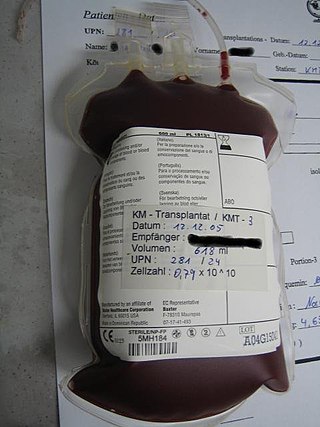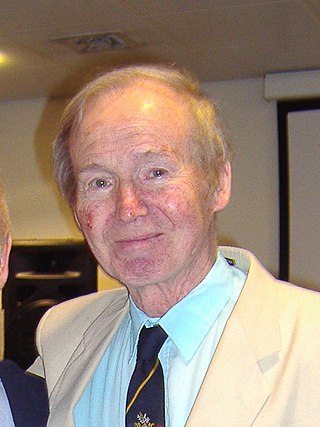| R (B) v Cambridge Health Authority | |
|---|---|
 Bone marrow biopsy | |
| Court | Court of Appeal |
| Keywords | |
| Health, bone marrow | |
R (B) v Cambridge Health Authority [1995] EWCA Civ 43 is a UK judicial review and enterprise law case, concerning health care in the UK.
| R (B) v Cambridge Health Authority | |
|---|---|
 Bone marrow biopsy | |
| Court | Court of Appeal |
| Keywords | |
| Health, bone marrow | |
R (B) v Cambridge Health Authority [1995] EWCA Civ 43 is a UK judicial review and enterprise law case, concerning health care in the UK.
The parents of a child named Jaymee Bowen claimed that she should receive chemotherapy and a second bone marrow transplant for their 10 year old’s acute myeloid leukaemia. Consultants at Addenbrooke's Hospital, Cambridge, and Royal Marsden Hospital in London thought it would not succeed. Treatment in the United States would have been far too expensive. One doctor in Hammersmith would have treated her for £75,000. The doctors believed it would be ineffective and inappropriate.
Laws J held the doctors should have to "do more than toll the bell of tight resources. They must explain the priorities that have led them to decline to fund the treatment."
Sir Thomas Bingham MR held, the same day, the Health Authority had acted rationally and fairly and intervention would be misguided.
I have no doubt that in a perfect world any treatment which a patient, or a patient's family, sought would be provided if doctors were willing to give it, no matter how much it cost, particularly when a life was potentially at stake. It would however, in my view, be shutting one's eyes to the real world if the court were to proceed on the basis that we do live in such a world. It is common knowledge that health authorities of all kinds are constantly pressed to make ends meet. They cannot pay their nurses as much as they would like; they cannot provide all the treatments they would like; they cannot purchase all the extremely expensive medical equipment they would like; they cannot carry out all the research they would like; they cannot build all the hospitals and specialist units they would like. Difficult and agonising judgments have to be made as to how a limited budget is best allocated to the maximum advantage of the maximum number of patients. That is not a judgment which the court can make. In my judgment, it is not something that a health authority such as this Authority can be fairly criticised for not advancing before the court.
After the Court of Appeal judgment, The Sun said the child was "Condemned by Bank Balance" and the Daily Mail said the child was "Sentenced to Death". An anonymous private donor paid for treatment. The consultant who had agreed changed tack, did not provide a second bone marrow transplant, and did an experimental treatment called donor lymphocyte infusion. Jaymee died after a few months.
The funeral of Jaymee Bowen was held on 28 May 1996. That evening Channel 4 cancelled its scheduled late-night programmes to enable the TV discussion After Dark to debate the issues of the case, with among others Julian Tudor Hart, Martin Israel and the NHS Director of Public Health who had turned down Jaymee's family when they asked for further treatment. [1] [ full citation needed ]

Organ donation is the process when a person authorizes an organ of their own to be removed and transplanted to another person, legally, either by consent while the donor is alive, through a legal authorization for deceased donation made prior to death, or for deceased donations through the authorization by the legal next of kin.

Severe combined immunodeficiency (SCID), also known as Swiss-type agammaglobulinemia, is a rare genetic disorder characterized by the disturbed development of functional T cells and B cells caused by numerous genetic mutations that result in differing clinical presentations. SCID involves defective antibody response due to either direct involvement with B lymphocytes or through improper B lymphocyte activation due to non-functional T-helper cells. Consequently, both "arms" of the adaptive immune system are impaired due to a defect in one of several possible genes. SCID is the most severe form of primary immunodeficiencies, and there are now at least seven different known genes in which mutations lead to a form of SCID. It is also known as the bubble boy disease and bubble baby disease because its victims are extremely vulnerable to infectious diseases and some of them, such as David Vetter, have become famous for living in a sterile environment. SCID is the result of an immune system so highly compromised that it is considered almost absent.

Hematopoietic stem-cell transplantation (HSCT) is the transplantation of multipotent hematopoietic stem cells, usually derived from bone marrow, peripheral blood, or umbilical cord blood, in order to replicate inside a patient and produce additional normal blood cells. HSCT may be autologous, syngeneic, or allogeneic.

Graft-versus-host disease (GvHD) is a syndrome, characterized by inflammation in different organs. GvHD is commonly associated with bone marrow transplants and stem cell transplants.
A cord blood bank is a facility which stores umbilical cord blood for future use. Both private and public cord blood banks have developed in response to the potential for cord blood in treating diseases of the blood and immune systems. Public cord blood banks accept donations to be used for anyone in need, and as such function like public blood banks. Traditionally, public cord blood banking has been more widely accepted by the medical community. Private cord blood banks store cord blood solely for potential use by the donor or donor's family. Private banks typically charge around $2,000 for the collection and around $200 a year for storage.

Anthony Nolan is a UK charity that works in the areas of leukaemia and hematopoietic stem cell transplantation. It manages and recruits donors to the Anthony Nolan Register, which is part of an aligned registry that also includes the Welsh Bone Marrow Donor Registry, NHS Blood and Transplant's British Bone Marrow Registry and Deutsche KnochenMarkSpenderdatei (DKMS) UK. This aligned register is known as the Anthony Nolan & NHS Stem Cell Registry. It also carries out research to help make bone marrow transplants more effective.

Bolam v Friern Hospital Management Committee [1957] 1 WLR 582 is an English tort law case that lays down the typical rule for assessing the appropriate standard of reasonable care in negligence cases involving skilled professionals such as doctors. This rule is known as the Bolam test, and states that if a doctor reaches the standard of a responsible body of medical opinion, they are not negligent. Bolam was rejected in the 2015 Supreme Court decision of Montgomery v Lanarkshire Health Board in matters of informed consent.
NMDP, formerly known as the National Marrow Donor Program and Be The Match, is a nonprofit organization founded in 1987 and based in Minneapolis, Minnesota, that operates a registry of volunteer hematopoietic cell donors and umbilical cord blood units in the United States.
Juvenile myelomonocytic leukemia (JMML) is a rare form of chronic leukemia that affects children, commonly those aged four and younger. The name JMML now encompasses all diagnoses formerly referred to as juvenile chronic myeloid leukemia (JCML), chronic myelomonocytic leukemia of infancy, and infantile monosomy 7 syndrome. The average age of patients at diagnosis is two (2) years old. The World Health Organization has included JMML as a subcategory of myelodysplastic and myeloproliferative disorders.

The National Organ Transplant Act (NOTA) of 1984 is an Act of the United States Congress that created the framework for the organ transplant system in the country. The act provided clarity on the property rights of human organs obtained from deceased individuals and established a public-private partnership known as Organ Procurement and Transplantation Network (OPTN). The OPTN was given the authority to oversee the national distribution of organs.

John Raymond Hobbs was a professor who was at the forefront of the techniques of clinical immunology, protein biochemistry and bone marrow transplantation, specifically in child health.
Transplantable organs and tissues may refer to both organs and tissues that are relatively often transplanted, as well as organs and tissues which are relatively seldom transplanted. In addition to this it may also refer to possible-transplants which are still in the experimental stage.
Gero Hütter is a German hematologist. Hütter and his medical team transplanted bone marrow deficient in a key HIV receptor to a leukemia patient, Timothy Ray Brown, who was also infected with human immunodeficiency virus (HIV). Subsequently, the patient's circulating HIV dropped to undetectable levels. The case was widely reported in the media, and Hütter was named one of the "Berliners of the year" for 2008 by the Berliner Morgenpost, a Berlin newspaper.

Childhood leukemia is leukemia that occurs in a child and is a type of childhood cancer. Childhood leukemia is the most common childhood cancer, accounting for 29% of cancers in children aged 0–14 in 2018. There are multiple forms of leukemia that occur in children, the most common being acute lymphoblastic leukemia (ALL) followed by acute myeloid leukemia (AML). Survival rates vary depending on the type of leukemia, but may be as high as 90% in ALL.

Georges Mathé was a French oncologist and immunologist. In November 1958, he performed the first successful allogeneic bone marrow transplant ever performed on unrelated human beings.
Mandi Jocelyn Schwartz was a Canadian ice hockey player with the Yale Bulldogs. She was a three time Eastern College Athletic Conference (ECAC) Hockey All-Academic, and played 73 consecutive games with the team before being diagnosed with acute myeloid leukemia in December 2008. Prior to joining Yale University, Schwartz had played minor hockey for Athol Murray College of Notre Dame in Saskatchewan. Her younger brother, Jaden currently plays for the Seattle Kraken in the National Hockey League.

Reticular dysgenesis (RD) is a rare, inherited autosomal recessive disease that results in immunodeficiency. Individuals with RD have mutations in both copies of the AK2 gene. Mutations in this gene lead to absence of AK2 protein. AK2 protein allows hematopoietic stem cells to differentiate and proliferate. Hematopoietic stem cells give rise to blood cells.
High-dose chemotherapy and bone marrow transplant (HDC/BMT), also high-dose chemotherapy with autologous bone marrow transplant, was an ineffective treatment regimen for metastatic breast cancer, and later high-risk breast cancer, that was considered promising during the 1980s and 1990s. With an overall idea that more is better, this process involved taking cells from the person's bone marrow to store in a lab, then to give such high doses of chemotherapy drugs that the remaining bone marrow was destroyed, and then to inject the cells taken earlier back into the body as replacement. It was ultimately determined to be no more effective than normal treatment, and to have significantly higher side effects, including treatment-related death.

Shimon Slavin is an Israeli professor of medicine. He pioneered immunotherapy mediated by allogeneic donor lymphocytes and innovative methods for stem cell transplantation to cure hematological malignancies and solid tumors. He also used hematopoietic stem cells to induce transplantation tolerance to bone marrow and organ allografts.

Shifa International Hospitals Limited (SIH) is a Pakistani healthcare company that operates a group of hospitals. It is headquartered in Islamabad.